 |
Picks is a monthly sampling of Japan's art scene, offering short reviews of exhibitions at museums and galleries in recent weeks, with an emphasis on contemporary art by young artists. |
 |
 |
 |
1 December 2011 |
 |
| 1 | 2 | |
 |
|
 |
 |
|
|
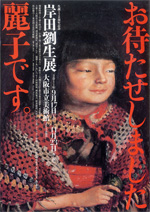 |
 |
|
| The 120th Anniversary of the Birth: Kishida Ryusei |
| 17 September - 23 November 2011 |
Osaka City Museum of Fine Arts
(Osaka) |
 |
| Both a Western-style realist and a Nihonga painter, Ryusei Kishida (1891-1929) died young but left an impressive legacy, to which this commemorative exhibition does noble justice. The centerpieces are two Important Cultural Properties, Road Cut through a Hill and Portrait of Reiko, but with over 200 works on display, the show satisfies in both quantity and quality. Kishida's early output reflects the astonishing pace at which he absorbed Impressionism, van Gogh, and Cezanne. Though his numerous paintings of his daughter Reiko are famous, it was his prolific portraiture of acquaintances and of himself that earned him the nickname "Ryusei the Headhunter." |
|
|
 |
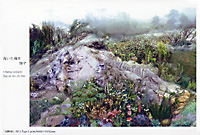 |
 |
|
| Tamaki Shindo: Searching for Scattered Seeds |
| 23 September - 16 October 2011 |
hpgrp Gallery Tokyo
(Tokyo) |
 |
| After majoring in oil painting at Musashino Art University, Shindo studied photography at Tokyo College of Photography; both media inform her present work. Since her 2009 show "Moving Mountain," she has been assembling eerie, preternatural landscapes from collages of plants and flowers shot in various places. Blending cutouts of vegetation, rocks, soil, water and sky in seemingly random profusion, she suffuses her scenery in subtly metamorphosing hues, creating environments that could pass for either heaven or hell. |
|
|
|
|

|
 |
 |
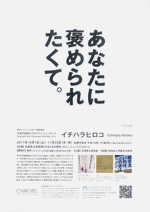 |
 |
| Channel 2: Hiroko Ichihara and Nobuaki Onishi |
| 1 October - 23 November 2011 |
Hyogo Prefectural Museum of Art
(Hyogo) |
 |
| Produced in tandem with the concurrent Kobe Biennale, this is the second installment of the "Channel" program, which introduces two promising artists at a time. Ichihara's huge boxlike white panels, covered with Japanese text in black gothic type, greet the visitor with familiar-sounding yet cryptic phrases -- "I just wanted to be praised by you," "The world is heaven with you" -- that could almost, but not quite, be mistaken for ad copy or film blurbs. In a studio he has built inside the museum, Onishi displays assortments of detritus -- pulverized plaster figures, dismantled automobiles, wrinkled construction sheets -- that appear randomly scattered at first, till one notices that each pile of debris sits adjacent to an identical one. Which of these meticulously arranged pairs is the copy -- or are both clones of some smashed-up original? The mind boggles, as it is clearly meant to. |
|
|
 |
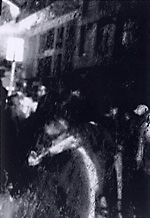 |
 |
| Mariko Shindo: bibo -SP KL TK- |
| 14 October - 5 November 2011 |
|
Zeit-Foto Salon
(Tokyo) |
 |
| It's been over a decade since photographer Shindo began exhibiting her enigmatic monochrome cityscapes under the title "bibo," a composite of "bio" and "body." With over ten solo shows under her belt during that period, the time seems right for a retrospective, and so the recent publication by Sokyusha of a collection titled bibo is welcome. The SP, KL and TK of the exhibition refer to the cities of Sao Paulo, Kuala Lumpur, and Tokyo, where these scenes were shot. |
|
|
|
|
|
|
|

|
 |
 |
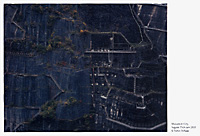 |
 |
| Toshio Shibata: concrete abstraction |
| 7 October - 6 November 2011 |
BLD Gallery
(Tokyo) |
 |
| The show's title is perfect, as Shibata's work has much to do with both meanings of "concrete" -- as a state of physicality (the opposite, indeed, of abstraction) and as a construction material that figures in nearly all of Shibata's images. Known for his stunning photos of dams, walls and other massive man-made structures in natural settings, Shibata here showcases compositions whose flat, mosaic-like patterns truly do resemble abstract paintings. |
|
|
 |
 |
| Junko Maruyama: utopia totopia |
| 6 August - 6 November 2011 |
6 Honmachi, Naka-ku, Yokohama
(Kanagawa) |
 |
| On a 50-meter square vacant lot next to Yokohama's Bashamichi subway station, Maruyama painted a huge flower, about 30 meters in diameter, with powdered soap made from waste oil. Maruyama, whose studio is on the fourth floor of a building next to the site, drew up the proposal and negotiated the requisite permits with the local authorities. The concept was simple: in the artist's words, "Draw a big flower with powder soap. Rainfall wipes out the big flower, draw it again." To see the work, of course, one had to be looking down on it from a considerable height, conveniently provided by the nearby Landmark Tower.
|
|

|
 |
 |
 |
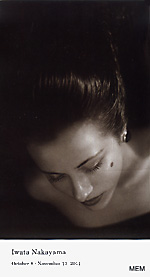 |
|
| Iwata Nakayama Portfolio 2010 |
| 8 October - 20 November 2011 |
MEM
(Tokyo) |
 |
| This special exhibition of works by Nakayama (1895-1949), who epitomized Japan's New Photography movement in the 1930s, took place in the MEM gallery on the top floor of the NADiff a/p/a/r/t complex in Ebisu. The occasion was the 2010 publication of a portfolio of 12 modern prints made from the original glass plates, representing Nakayama's finest work before and after the war. They range from "Fukusuke Tabi" (1930), a prizewinner at the First International Exhibition of Commercial Photography, to the posthumously printed "Festival of the Demon" (1948). |
|
|
 |
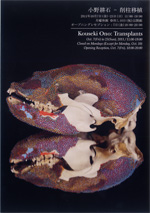 |
 |
| Kouseki Ono: Transplants |
| 7 - 23 October 2011 |
Art Front Gallery
(Tokyo) |
 |
| Countless little pillars of layered color protrude from the surface of cicada husks and deer skulls; the effect is a tad quease-inducing. The layers are produced by screen-printing colored dots -- each only a couple of millimeters wide -- 100 times or so, in exactly the same spots but with different colors for each printing. In his current "Transplants" series, Ono has scraped off these "color towers" and transferred them to the aforementioned objects. It's a weird undertaking, but impressive. Insofar as no one is likely to imitate him, or would be capable of doing so even if they wanted to, Ono gets top points for sheer originality.
|
|
|
|
|
|
|
 |
 |
| Hisaharu Motoda |
| 26 September - 22 October 2011 |
Art Gallery C Square
(Aichi) |
 |
| Located on the Nagoya campus of Chukyo University, the C Square gallery recently hosted a large and satisfying retrospective of prints and oil paintings by Motoda, an artist notorious for his chilling depictions of contemporary architectural landmarks lying in ruins in some indeterminate future. Devoid of hints as to the cause of civilization's collapse, the decaying, weed-infested hulks of Tokyo Station, the National Diet Building, or Haneda Airport sit there without a living soul in sight. Motoda's bleak vision extends overseas as well, to the likes of Sydney's Opera House and San Francisco's baseball park. Since he visited these places at the invitation of government-sponsored art programs, it seems a bit curmudgeonly to portray his host cities in such a post-apocalyptic manner. But then, artists are always biting the hands that feed them. |
|
 |
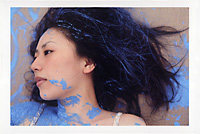 |
 |
| Aiko Nakano: Season's Greetings |
| 30 September - 12 October 2011 |
Gallery Speak For
(Tokyo) |
 |
Nakano majored in painting at Tama Art University but has been known for her photography ever since winning the Grand Prix at the 8th Hitotsubo Exhibition in 1996. Though lumped in with the "women photographers boom" of the nineties, she has amply demonstrated her staying power in the intervening 15 years. The lively camerawork of the "Season's Greetings" series, a collaboration with models and stylists, evinces a light but sure hand with her subjects and smooth communication with her collaborators. Now a veteran of the medium, Nakano is producing work at a consistently high level.
|
|
|
|
|
 |
|